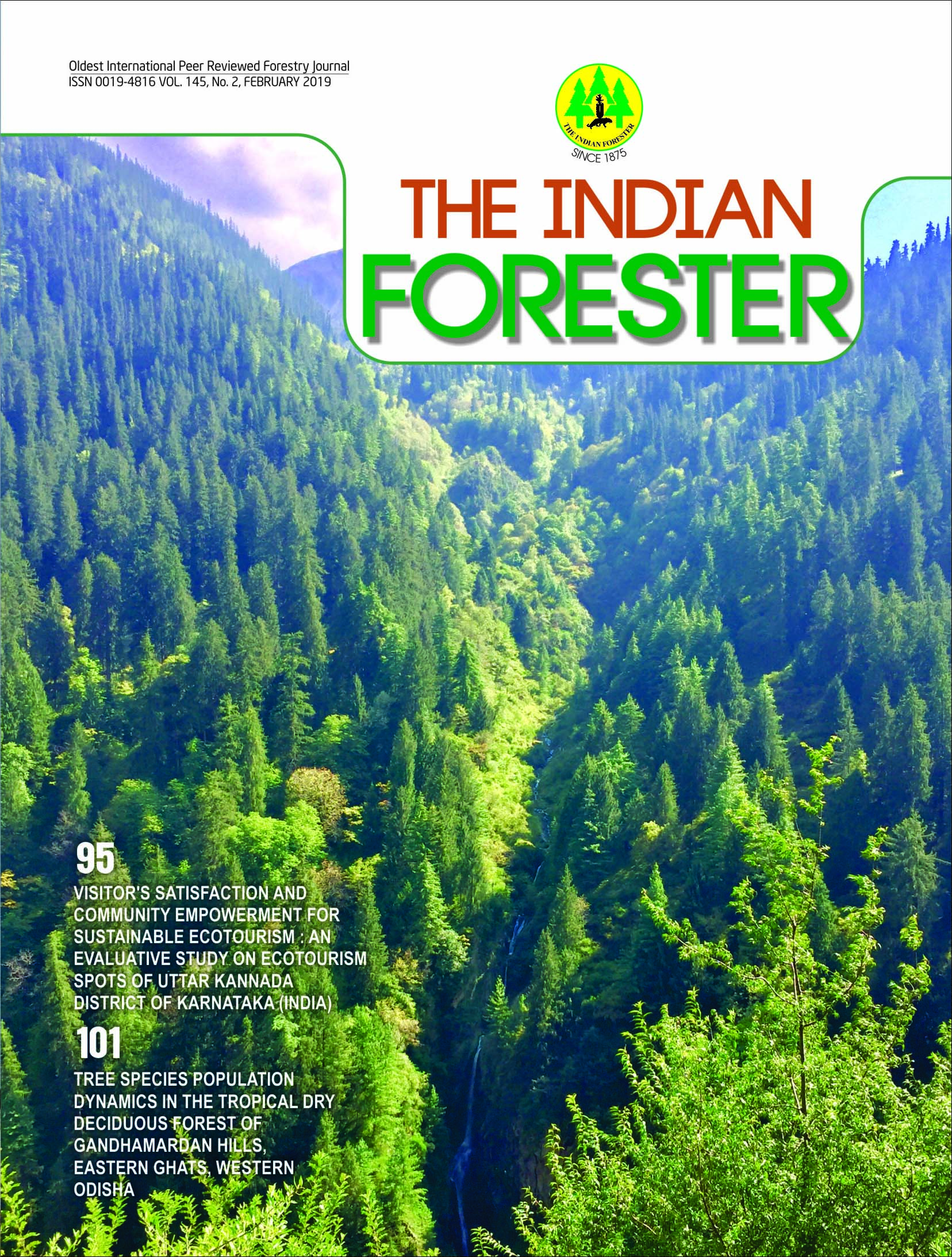Well Being and Conservation Awareness of Communities around Chitwan National Park, Nepal
DOI:
https://doi.org/10.36808/if/2019/v145i2/144261Keywords:
Community Based Conservation, Livelihood, Shared Benefits from Protected Areas.Abstract
Biodiversity conservation especially in Protected Areas (PA) depends on Community Based Conservation (CBC) programs. Sharing of PA revenues with local communities in the buffer zone of PA's is a major component of CBC. Herein, we assess the effectiveness of the CBC programs in Chitwan National Park, Nepal by evaluating people's perception of benefits shared from PA with the existence of the PA. The communities around Chitwan were found to be economically well off compared to national averages, majority (71%) had concrete houses, with all households having electricity and water supply. Majority (79%) of the people were aware of park revenue being shared and 73.6% linked community welfare works to the existence of the PA. Most people (55%) were aware of ecological concepts like impacts of deforestation and loss of large carnivores. We found no differences amongst the respondents based on gender, economic strata or educational levels in their responses. Park management would benefit by focusing on awareness campaigns that link shared benefits to existence of the PA and streamlining payment of compensation for crop and livestock damage by wildlife.References
Bookbinder M.P., Dinerstein E., Rijal A., Cauley H. and Rajouria A. (1998), Ecotourism's Support of Biodiversity Conservation. Conservation Biology, 12: 1399-1404. doi:10.1111/j.1523-1739.1998.97229.x
Budhathoki P. (2004). Linking communities with conservation in developing countries: buffer zone management initiatives in Nepal. Oryx, 38(03): 334-341.
Dhakal B. (2006). The Issues of Oppressed Groups' Access to Collectively Managed Resources: An Empirical Analysis. Bankojanakari, 16(1): 25-31.
Gadd M.E. (2005). Conservation outside of parks: attitudes of local people in Laikipia, Kenya. Environmental Conservation, 32(01): 50-63.
Gurung H.B. (2008). Fusioning: A grounded theory of participatory governance in the Annapurna conservation Area, Nepal. Gold Coast. Australia: Griffith University.
Heinen J.T. and Shrestha S.K. (2006). Evolving policies for conservation: an historical profile of the protected area system of Nepal. J. Envir. Planning and Management, 49(1): 41-58.
Karanth K.K. and DeFries R. (2010). Conservation and management in human-dominated landscapes: case studies from India. Biological conservation, 143(12): 2865-2964.
Karki J.B., Pandav B., Jnawali S.R., Shrestha R., Pradhan N.M.B., Lamichane B.R., Khanal P., Subedi N. and Jhala Y.V. (2015). Estimating the abundance of Nepal's largest population of tigers Pantheratigris. Oryx, 49(01): 150-156.
McLean J. and Straede S. (2003). Conservation, relocation, and the paradigms of park and people management-a case study of Padampur villages and the Royal Chitwan National Park, Nepal. Society and Natural Resources, 16(6): 509-526.
Nepal S. and Spiteri A. (2008). Evaluating local benefits from conservation in Nepal's Annpurna Conservation Area. Environmental Management, 42: 391-401. DOI: 10.1007/s00267-008-9130-6
Sharma U.R. (1991). Park –people interactions in Royal Chitwan National Park, Nepal. Ph.D Dissertation. The University of Arizona.
Shibia M.G. (2010). Determinants of attitudes and perceptions on resource use and management of Marsabit National Reserve, Kenya. J. Human Ecology, 30(1): 55-62.
Stræde S. and Helles F. (2000). Park-people conflict resolution in Royal Chitwan National Park, Nepal: buying time at high cost? Environmental Conservation, 27(04): 368-381.
Studsrød J.E. and Wegge P. (1995). Park-people relationships: the case of damage caused by park animals around the Royal Bardia National Park, Nepal. Environmental conservation, 22(2): 133-142.
Subedi N., Jnawali S.R., Dhakal M., Pradhan N.M., Lamichhane B.R., Malla S., Amin R. and Jhala Y.V. (2013). Population status, structure and distribution of the greater one-horned rhinoceros Rhinocerosunicornis in Nepal. Oryx, 47(03): 352-360.
Talukdar B.K., 2013. Asian rhino specialist group report. Pachyderm, (54), pp. 28-35.
Zar J.H. (1996). Biostatistical analysis. Biostatistical Analysis (4th Edition), 55: 75309.
Downloads
Downloads
Published
How to Cite
Issue
Section
License
Unless otherwise stated, copyright or similar rights in all materials presented on the site, including graphical images, are owned by Indian Forester.





